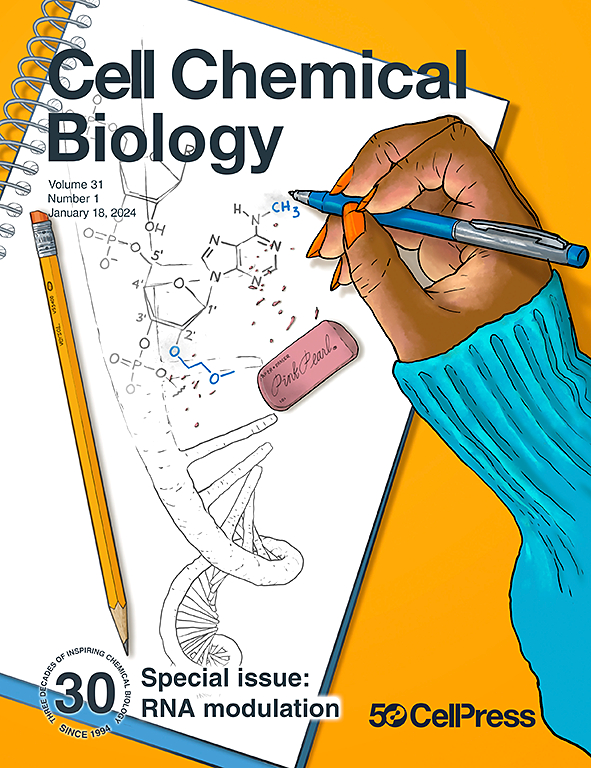IF 6.6
1区 生物学
Q1 BIOCHEMISTRY & MOLECULAR BIOLOGY
引用次数: 0
摘要
抗菌药耐药性是对人类健康的一种威胁,它使目前的一线抗生素失效。为保证未来成功治疗人类疾病,迫切需要克服耐药性机制的新制剂。氯替尼是一类作用模式尚不清楚的天然产品,已被证明对多重耐药革兰氏阳性细菌和恶性疟原虫具有广谱活性,在小鼠感染模型中具有良好的活性和安全性。在这里,我们报告了氯硝柳胺可以靶向细胞膜、细胞壁和蛋白质的生物合成。它们的特点是通过干扰离子平衡导致膜去极化而迅速起效,但不会引起严重的屏障失效或细胞溶解。进一步的特征研究证实,氯毒素与细菌膜脂结合,最终导致钾转运失控。此外,我们还确定了肽聚糖生物合成蛋白 YbjG 和蛋氨酸氨肽酶 MetAP 的功能抑制作用是氯毒素的次要靶标。本文章由计算机程序翻译,如有差异,请以英文原文为准。


Natural products chlorotonils exert a complex antibacterial mechanism and address multiple targets
Antimicrobial resistance is a threat to human health rendering current first-line antibiotics ineffective. New agents overcoming resistance mechanisms are urgently needed to guarantee successful treatment of human disease in the future. Chlorotonils, a natural product class with yet unknown mode of action, were shown to have broad-spectrum activity against multi-resistant Gram-positive bacteria and the malaria parasite Plasmodium falciparum, with promising activity and safety in murine infection models. Here, we report that chlorotonils can target the cell membrane, cell wall, and protein biosynthesis. They can be characterized by a rapid onset of action via interference with ion homeostasis leading to membrane depolarization, however, without inducing severe barrier failure or cellular lysis. Further characterization confirmed binding of chlorotonils to bacterial membrane lipids eventually leading to uncontrolled potassium transport. Additionally, we identified functional inhibition of the peptidoglycan biosynthesis protein YbjG and methionine aminopeptidase MetAP as secondary targets of chlorotonils.
求助全文
通过发布文献求助,成功后即可免费获取论文全文。
去求助
来源期刊

Cell Chemical Biology
Biochemistry, Genetics and Molecular Biology-Molecular Medicine
CiteScore
14.70
自引率
2.30%
发文量
143
期刊介绍:
Cell Chemical Biology, a Cell Press journal established in 1994 as Chemistry & Biology, focuses on publishing crucial advances in chemical biology research with broad appeal to our diverse community, spanning basic scientists to clinicians. Pioneering investigations at the chemistry-biology interface, the journal fosters collaboration between these disciplines. We encourage submissions providing significant conceptual advancements of broad interest across chemical, biological, clinical, and related fields. Particularly sought are articles utilizing chemical tools to perturb, visualize, and measure biological systems, offering unique insights into molecular mechanisms, disease biology, and therapeutics.
 求助内容:
求助内容: 应助结果提醒方式:
应助结果提醒方式:


